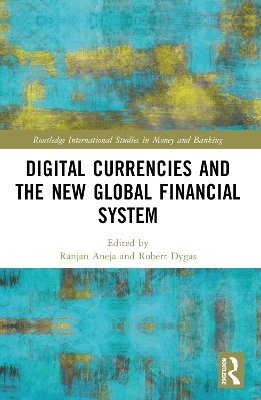
Digital Currencies and the New Global Financial System
Routledge (Verlag)
978-1-032-31573-7 (ISBN)
The book draws a clear distinction between digital and cryptocurrencies and answers several research questions, such as what the consequences of forming Central Bank Digital Currencies and their impact on the financial markets, in both advanced and developing economies, might be. Another question refers to whether the role of monetary policy easing has led to the rise of the virtual currency market, while still others relate to the impact of the pandemic on international settlements. The book also discusses the issue of investment in cryptocurrencies, and the related risks, whether or not this is a profitable investment vehicle, and how the digital banking system evaluates such investments. Further, the book also highlights the post-pandemic challenges for central banks, such as future monetary policy. It includes a complex review of the literature and presents elaborate econometric models of digital currencies and cryptocurrencies. The book has a wide geographic focus, examining these aspects from the perspective of several countries including China, India and the US.
The primary audience for the book is researchers, scholars and students of international finance and economics but it will also appeal to practitioners concerned with the digitalisation of financial systems, policymakers and regulatory agencies.
Note: Prof. Shalini Talwar's affiliation is published incorrectly. Her correct affiliation, which may be considered for referencing and records is: Shalini Talwar, Associate Professor, S. P. Jain Institute of Management and Research, Mumbai, India.
Ranjan Aneja is Professor & Head of the Department of Economics, Central University of Haryana, Mahendergarh, Haryana, India. Robert Dygas is an Assistant Professor in the Department of East Asian Economic Studies, SGH Warsaw School of Economics, Warsaw, Poland.
List of tables. List of contributors. Preface. Editors biographies. Literature review regarding digital currencies and cryptocurrencies in the New Global Financial System. Impact of COVID-19 on the payment methods and rise of digital money. It’s a time to crypto for retail investors: Cryptocurrencies as an alternative asset class for optimising an all-equity portfolio. The impact of inequality and poverty on cryptocurrency use. The price and promise of cryptocurrencies. The impact of money supply on the development of virtual currencies. Post-pandemic challenges for global central banking. Issue of central bank digital currencies – potential consequences for the shape of the financial system. The meaning of decentralised finance (DeFi). Toward an European central bank digital currency: chances and problems. CBDC design and implementation in the context of differences between advanced and emerging economies. Advent of central bank digital currency and the future of monetary sovereignty. Acknowledgements and conclusion. References. Index.
| Erscheinungsdatum | 05.10.2022 |
|---|---|
| Reihe/Serie | Routledge International Studies in Money and Banking |
| Zusatzinfo | 22 Tables, black and white; 26 Line drawings, black and white; 5 Halftones, black and white; 31 Illustrations, black and white |
| Verlagsort | London |
| Sprache | englisch |
| Maße | 156 x 234 mm |
| Gewicht | 385 g |
| Themenwelt | Wirtschaft ► Betriebswirtschaft / Management ► Finanzierung |
| Wirtschaft ► Volkswirtschaftslehre ► Finanzwissenschaft | |
| ISBN-10 | 1-032-31573-3 / 1032315733 |
| ISBN-13 | 978-1-032-31573-7 / 9781032315737 |
| Zustand | Neuware |
| Haben Sie eine Frage zum Produkt? |
aus dem Bereich


